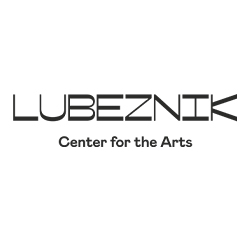Lubeznik Center for the Arts (LCA) in Michigan City facilitated three murals this year – two in La Porte and one in Michigan City – as part of its mural program. The organization is on a mission to uplift and bring autonomy to neighborhoods across Northwest Indiana through art.

For LCA, the program is about more than creating murals. There’s a hunger for art and the result of feeding people is value, pride, power, transformation, and health benefits, according to Janet Bloch, the executive director of LCA. Bloch fell in love with the organization because of the team’s collaborative nature, community work, and potential to make a big impact. While LCA facilitates each public mural, it wants to make each neighborhood part of the process of the investment.
“Facilitation is what makes our part of it successful,” Bloch said. “People feel like we didn't plop a mural somewhere and they had no say. You really do have to get the community to buy into it. We provide that opportunity, and I think that's what makes it exciting. People feel ownership.”
The mural program was born in 2021 after Bloch caught on to the public’s desire for murals in the places it lives and frequents. She believed LCA should be the one leading the initiative, deciding they could afford to pay an artist to make a mural that year. From there, it was all about where the first mural would be constructed and ultimately benefit the people. The team knew it wanted to focus on economically challenged neighborhoods, specifically in Michigan City.
LCA began working with three Black churches the year prior. It wanted to get to know the congregations, which happened with New Hope Missionary Baptist Church on the west side of Michigan City. A garage in view from the church’s entrance caught Bloch’s eye as the perfect canvas. She pitched the idea to the church board for the congregation to collaborate with LCA on a free mural.

“The idea was we want to start to go into neighborhoods that are economically depressed and bring some art,” Bloch said. “We know from data and also from people telling us they wanted art in their neighborhood. The data shows when people own the art in the neighborhood, they feel pride; it brings joy, and art is valued. It brings value to the community. All this was more of a theory until we did it, and then we saw it was real.”
There was no doubt the congregation would have a hand in their mural. Three public sessions were held where the congregation insisted on emphasizing the history and value of the church. They even drew designs on black paper, which the artist, Bernard Williams, then incorporated into the mural. People of every age came to paint the mural.
It’s important to LCA that the content of a mural is determined by the community it’s reflecting. The people have a say in where the mural will go, what the mural will symbolize, and who will paint the product. LCA is simply there to facilitate and supervise the process. There’s an unspoken dialogue that happens between the work of artists. As an artist herself, Bloch feels this connection with the public.
“I feel like I’m having important conversations with other people who are trying to make an impact on their community and bring art to their public and make it more digestible and accessible,” Bloch said.
Calls began pouring in after the first mural was completed. Bloch asked for more pop-ups and more murals. She continues to have meetings about expanding the program. Some murals were funded by outside sources. For others, Bloch isn’t sure how LCA paid for them. Nevertheless, what’s important is that different communities are served.
Bloch doesn’t know what the next mural will be, where it will be, or who it will be painted by, but what she does know is the program will continue. Even without the traction it’s received over the course of three years, the art is making a difference.

“We wanted to form more authentic, deeper relationships with the community, especially bringing in more of a diverse audience to us,” Bloch said. “We still have a mostly white audience, and it is really changing. You can visibly see it's changing, which is unbelievable.”
Like the other completed murals created through the program, the designs of this year’s three murals aren’t connected. “Bridge to Tomorrow” – located on the Helping Our People Excel (H.O.P.E.) Community Center – illustrates hope for Michigan City. Alex Ann Allen created two vibrant pieces for La Porte: “La Portal” on the La Porte County Public Library Exchange and one on the California-style Mexican restaurant Mucho Mas.
Public murals centered around community involvement have the ability to foster genuine engagement and economic equity. When LCA had a celebration for the H.O.P.E. mural in September, a man from the neighborhood brought chrysanthemums. A group of people also met every Saturday to clean up the overgrown backside of the building, which prompted the city to step in to help.
“Once you paint something, people want lights on it and it feeds a certain kind of neighborhood improvement,” Bloch said. “It feeds the desire for it. People see what you're doing over here and they go, ‘How do I help? How can I be a part of that?’ It's a very exciting process.”
To learn more about Lubeznik Center for the Arts, please visit lubeznikcenter.org.


